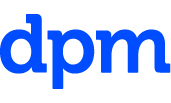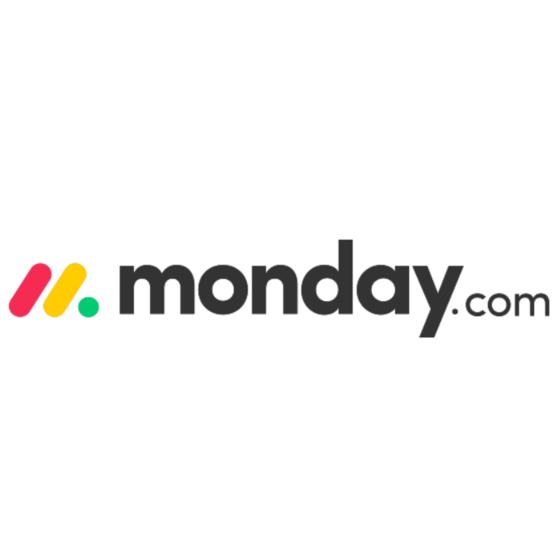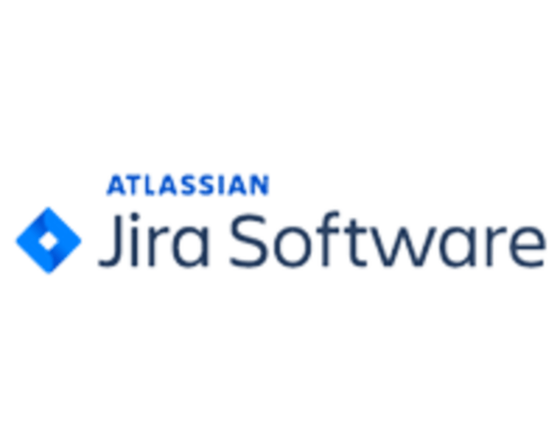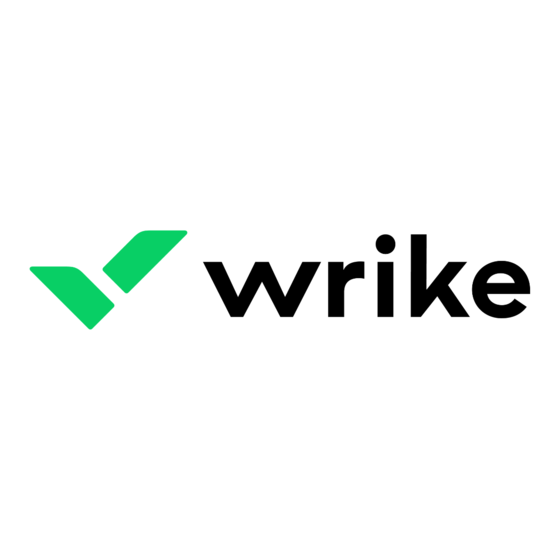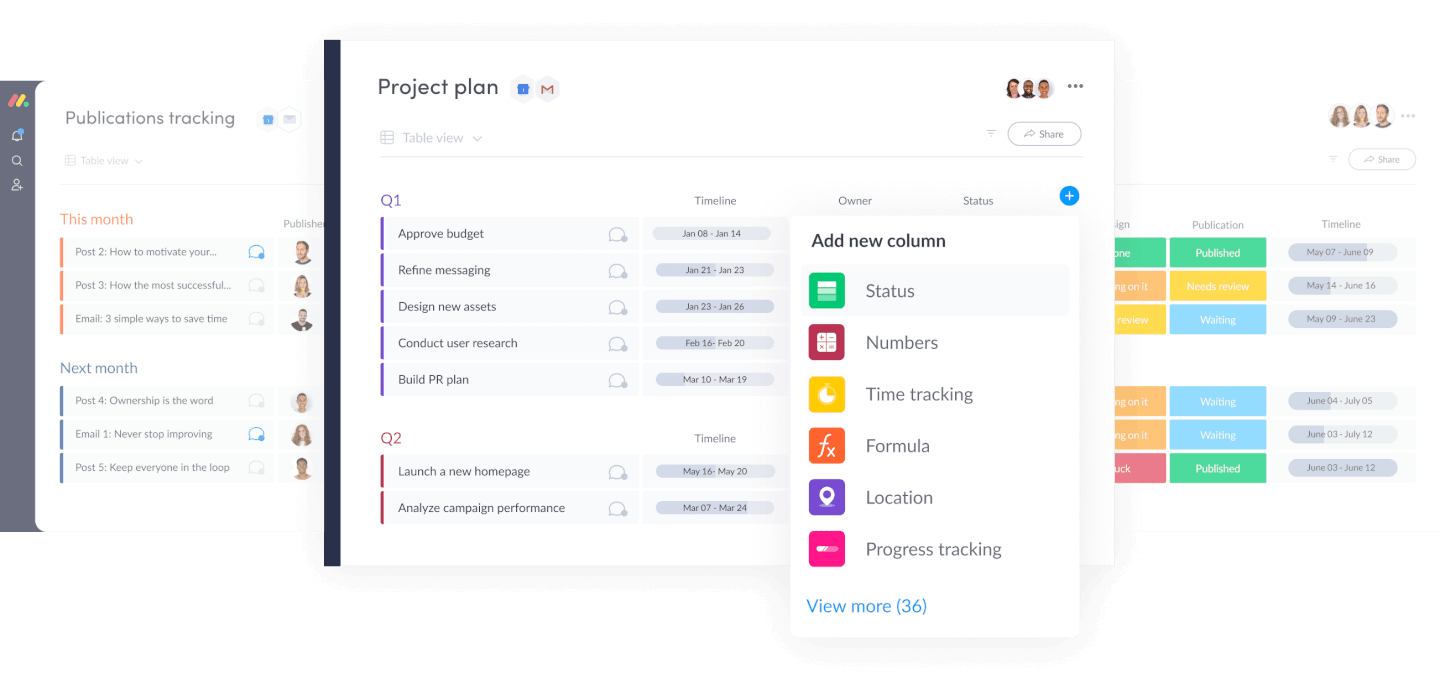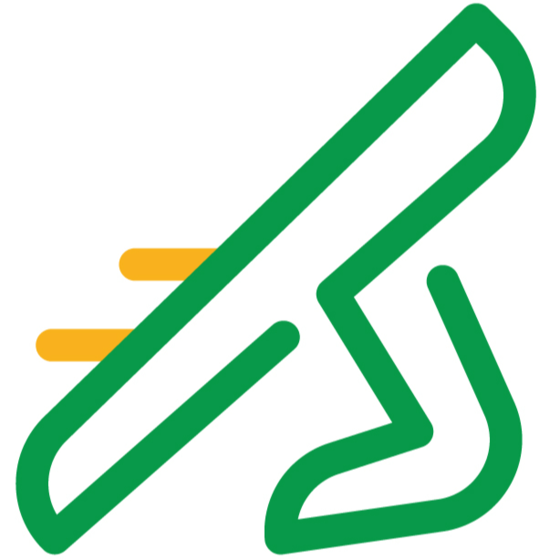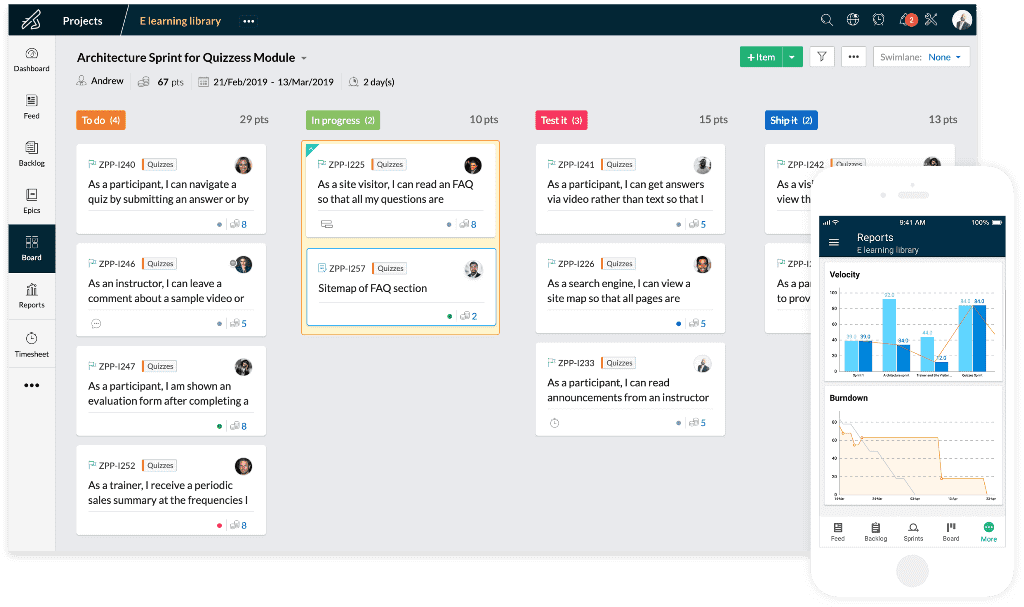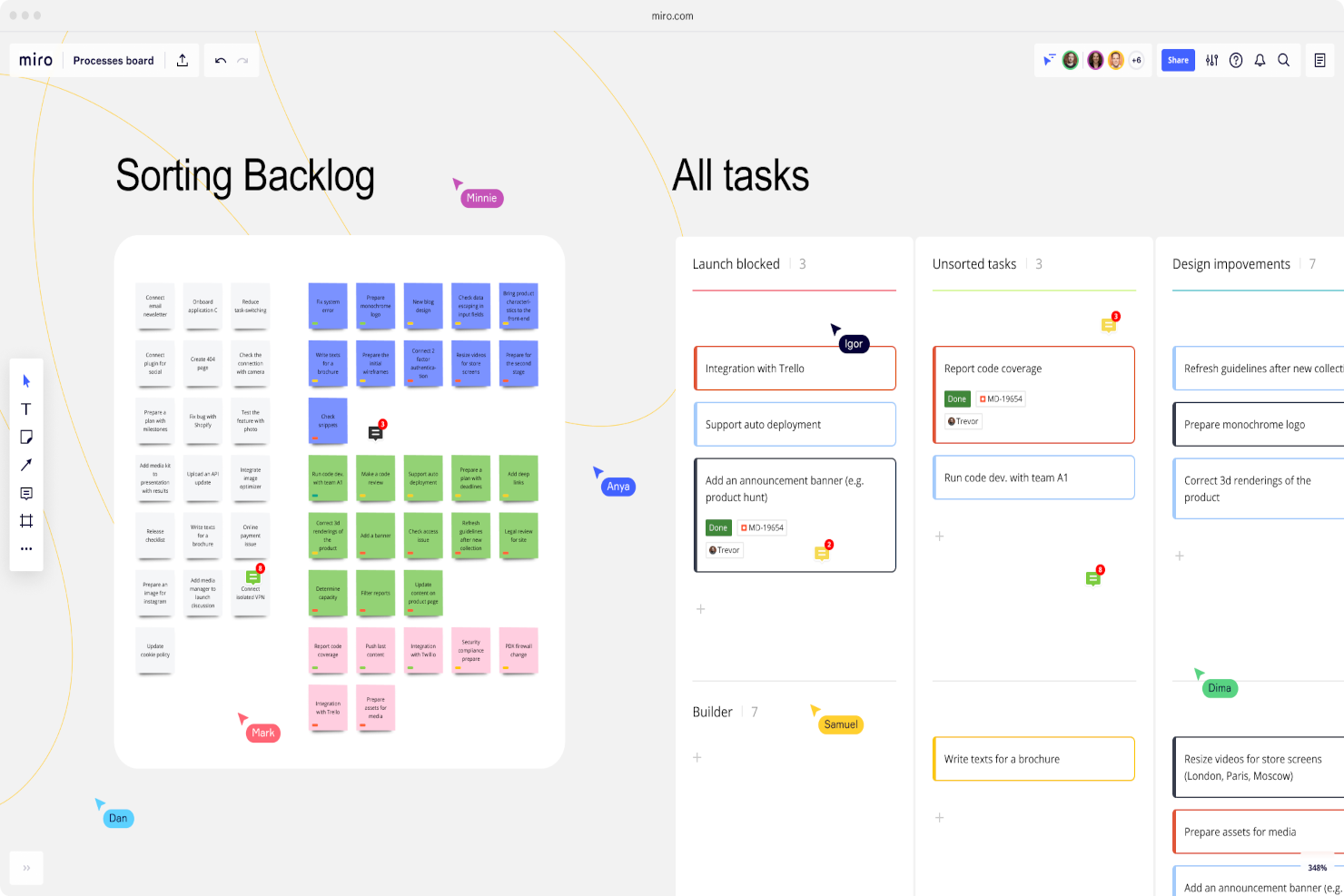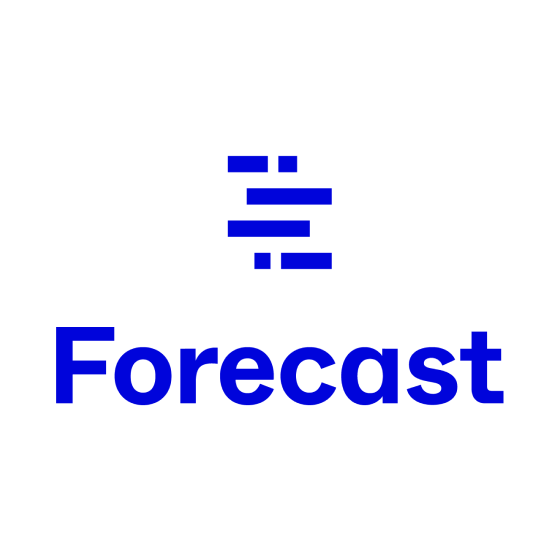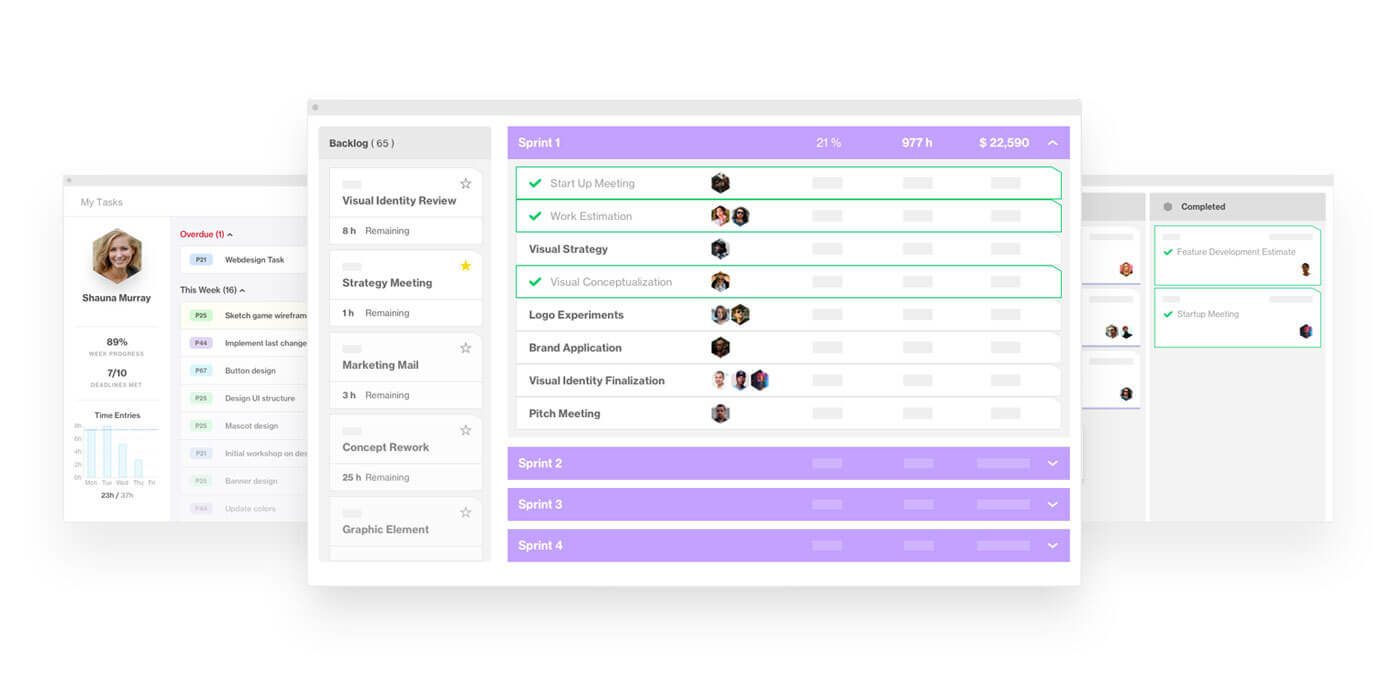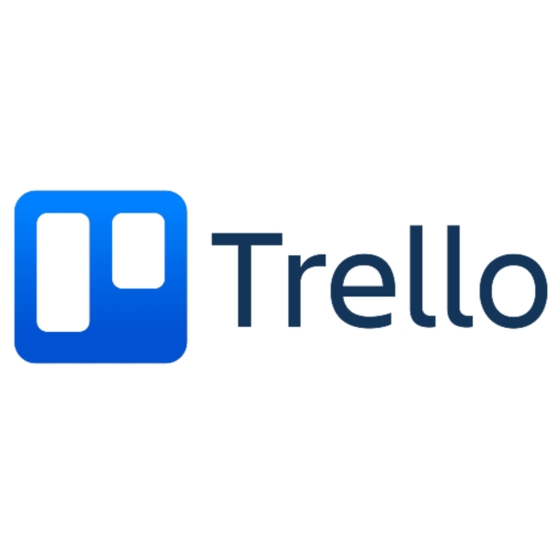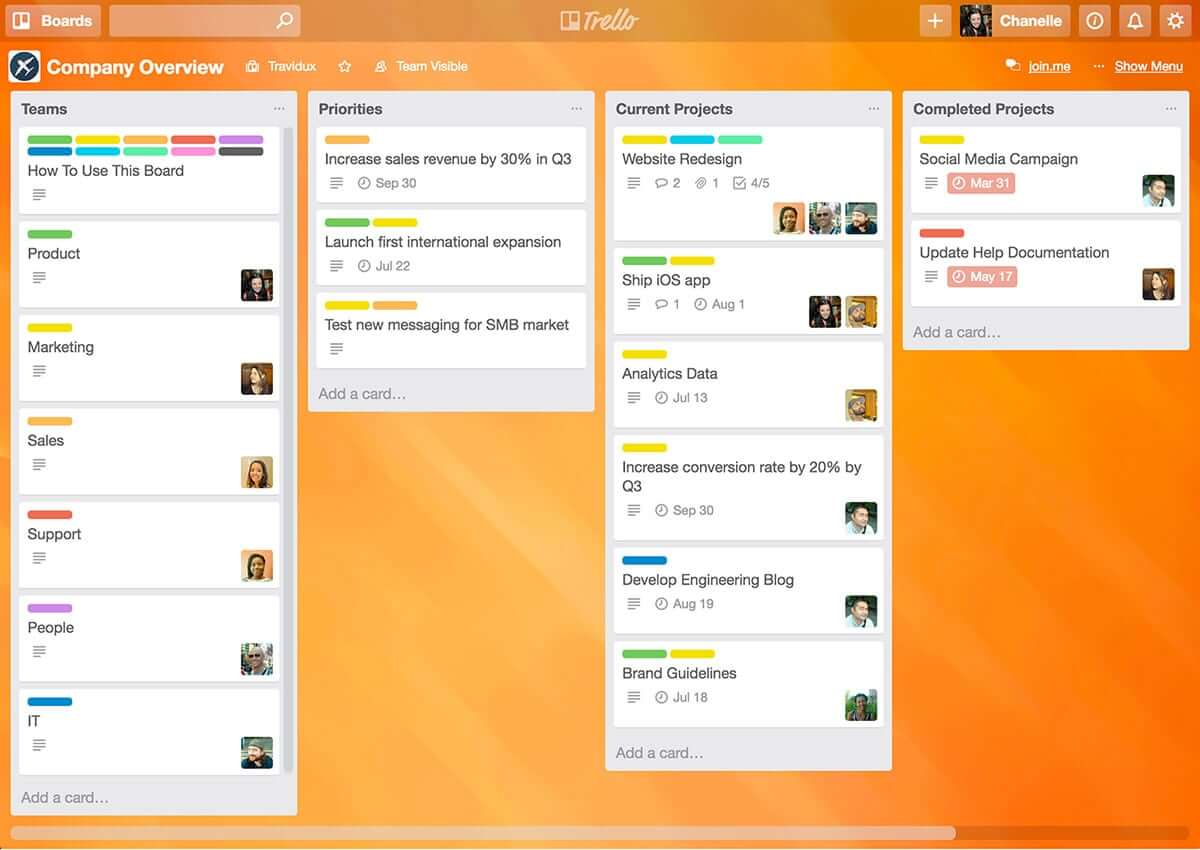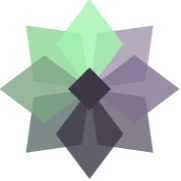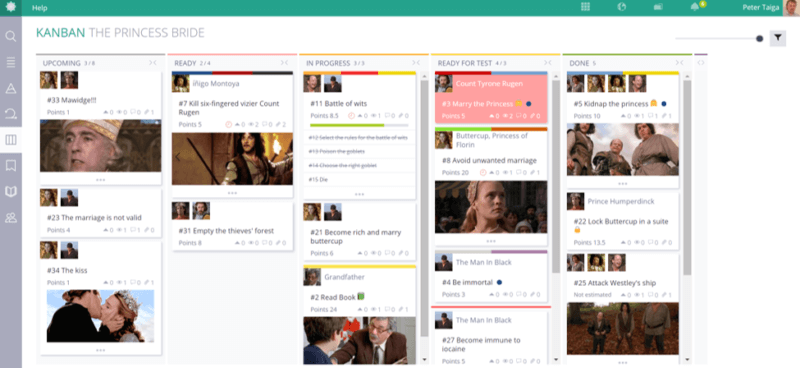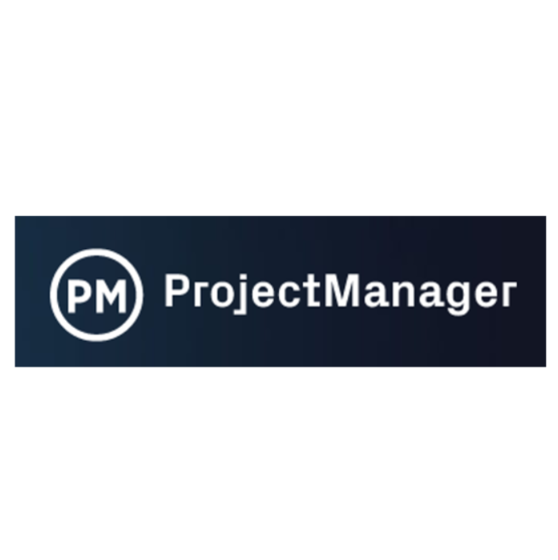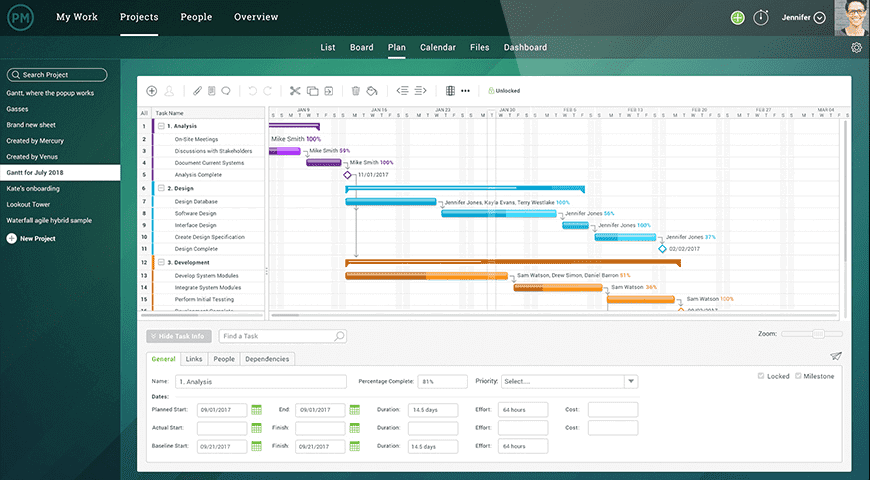10 Sélection des meilleurs outils agile
Here's my pick of the 10 best software from the 20 tools reviewed.
Vous trouverez ci-dessous un aperçu de ces outils agile, avec des captures d’écran, un aperçu des fonctionnalités, les prix et notre note.
Notions de base sur les logiciels agile
Qu’est-ce que la méthodologie Agile?
Agile n’est pas du tout une méthodologie, mais un ensemble de principes pour le développement de logiciels. Les principes d”Agile sont:
- Les individus et les interactions sur les processus et les outils
- Logiciel de travail sur une documentation complète
- Collaboration du client dans la négociation du contrat
- Répondre au changement en suivant un plan
Agile est souvent comparé à Waterfall, une méthodologie qui nécessite un recueil initial des exigences et effectue le travail en phases séquentielles.
Pour en savoir plus sur Agile, consultez notre article sur les méthodologies de gestion de projet.
Qu’est-ce que la méthodologie Scrum?
Scrum est une méthodologie avec un ensemble de principes et un processus pour améliorer la livraison. En développement logiciel, Scrum est l’un des cadres les plus populaires appliquant les principes d’Agile. Il comprend un ensemble de cérémonies de mêlée et de rôles à l’appui du processus. L’objectif est d’améliorer la communication, le travail d’équipe et la rapidité du développement. Sprints, Scrums (ou réunions debout), Rétrospectives, les backlogs et les burndowns sont tous des parties de Scrum.
Pour en savoir plus sur Scrum, consultez notre article sur les méthodologies de gestion de projet.
Que sont les outils agile?
Les outils agile sont des outils de gestion de projet conçus pour supporter une méthodologie agile, qu’il s’agisse de Scrum, Kanban, Scrumban ou autres méthodes hybrides agile.
La gestion de projets agile peut être difficile, donc les outils de niche pour les projets agile peuvent être très utiles pour nous aider à gérer la folie. Bien que l’idée d’auto-organisation et d’autogestion des équipes de développement de logiciels soit élevée au sein des agences, on peut soutenir que les chefs de projet ont encore un rôle à jouer dans la gestion plus globale du projet et quand les budgets et livrables sont en jeu, la gestion budgétaire est très importante.
Lors de la gestion de projets agile dans les agences, le rôle de gestion de projet en interne est souvent un rôle de chef d’équipe, ou Scrum Master, facilitant l’équipe, obtenant des ressources pour elle, et la protégeant des problèmes. À l’externe, le rôle de gestion de projet consiste à gérer l’interface du client (ou du propriétaire du produit) avec le projet, en s’assurant que tout le monde est sur la même longueur d’onde en ce qui concerne les exigences, les priorités, les budgets, les délais et les rapports.
Quels sont les outils utilisés dans la méthodologie Agile?
Les outils utilisés dans la méthodologie agile peuvent être utilisés de différentes manières selon la façon dont vous réalisez votre approche agile. Vos outils pourraient inclure :
- Les backlogs : Établissez des priorités et redéfinissez l’ordre de priorité des histoires d’utilisateurs et des bugs à l’aide de cartes d’arriéré par glisser-déposer.
- Tableaux de kanban ou de Scrum : Visualisez toutes les histoires d’utilisateurs avec des cartes affichant les tâches, les assignés et les statuts dans un sprint.
- Tâches de swim lanes ou colonnes : Séparez les épopées, les cessionnaires, les projets (etc.) en déplaçant les cartes par glisser-déposer sur les pistes.
- Flux de travail : Créez des workflows personnalisés qui mettent à jour automatiquement les problèmes en fonction d’événements spécifiques.
- Sprints : Utilisez l’arriéré pour estimer les histoires et établir les tâches et les priorités pour les sprints.
- Scrums ou Standups quotidiens : Utilisez le tableau de bord pour obtenir un instantané de l’état d’avancement afin de vous préparer aux mêlées de presse ou aux standups.
- Le tableau de bord : Gérer la progression en suivant le travail total restant dans le sprint ou l’épopée.
- Diagramme de vitesse : Suivez la vitesse de votre équipe et faites des prévisions précises en suivant la quantité de travail accompli dans chaque sprint.
Vous venez de réaliser que vous êtes à la recherche d’un outil agile différent du votre? Jetez un coup d’œil à ces critiques:
- Logiciel Scrum pour soutenir une équipe travaillant à Scrum.
- Outils Kanban pour hiérarchiser les tâches et collaborer visuellement.
Agile est le mot à la mode préféré de tout le monde en matière de gestion de projet et de livraison, mais quels outils Agile pouvez-vous utiliser pour aider à mener à bien un projet agile? Dans cet article comparatif sur les outils agile, nous allons explorer quelques-uns de nos outils et plateformes de développement agile préférés pour la gestion de projets agile.
Comparez et évaluez rapidement les meilleurs outils agile
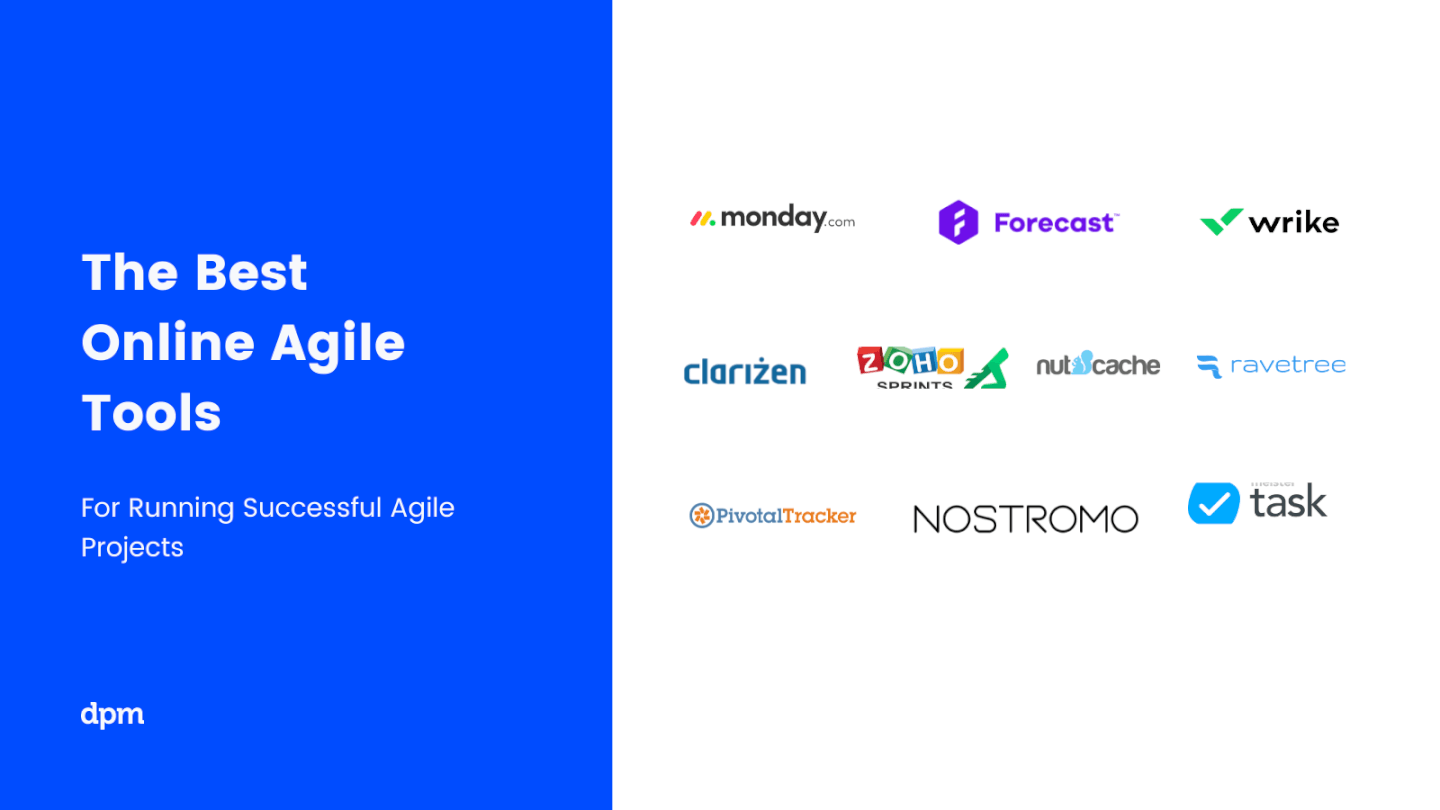
Critères de choix des outils agile
Les meilleurs outils agile fournissent les éléments les plus importants suivants pour une gestion de projet agile. Je regarde les éléments en dehors de leur ensemble de fonctionnalités, comme leur interface utilisateur, leur facilité d’utilisation (est-ce facile à apprendre?). J’évalue également la valeur de l’outil pour le prix – comment son prix se compare à celui d’autres outils ayant des caractéristiques et des fonctionnalités similaires.
En termes de fonctionnalités, je recherche ce qui suit pour évaluer les meilleurs outils agile dans cette revue :
- Gestion des tâches – Kanban ou tableaux de Scrum avec les projets, listes de tâches et tout ce qui s’y rattache – des dossiers et des discussions aux relevés de temps et aux dépenses.
- Collaboration d’équipe – Communiquer les mises à jour avec les équipes locales et distribuées, et partager les listes de tâches, les commentaires et les affectations.
- Métriques, rapports et analyses agile – Suivi et projection du temps, rapports d’avancement faciles à comprendre pour les parties prenantes, assurance qualité, et progrès avec des outils pour identifier et éliminer les obstacles au projet, évaluer les performances et évaluer les finances.
Et enfin, je vérifie les intégrations. Je veux m’assurer que l’outil fonctionne bien avec d’autres bons outils. Dans le cas des outils agile, qui sont souvent utilisés pour le développement de logiciels, je traite les intégrations avec les outils de développement logiciel et de gestion des problèmes avec une priorité plus élevée. Cependant, gardez à l’esprit que les équipes dans des environnements sans développement n’auront pas besoin de ce type d’intégration et profiteront davantage des intégrations avec d’autres applications de travail comme Slack, Google Apps, Adobe, etc.
The Digital Project Manager est sponsorisé par le lecteur. Lorsque vous cliquez sur les liens de notre site, nous pouvons gagner une commission. En Savoir Plus.
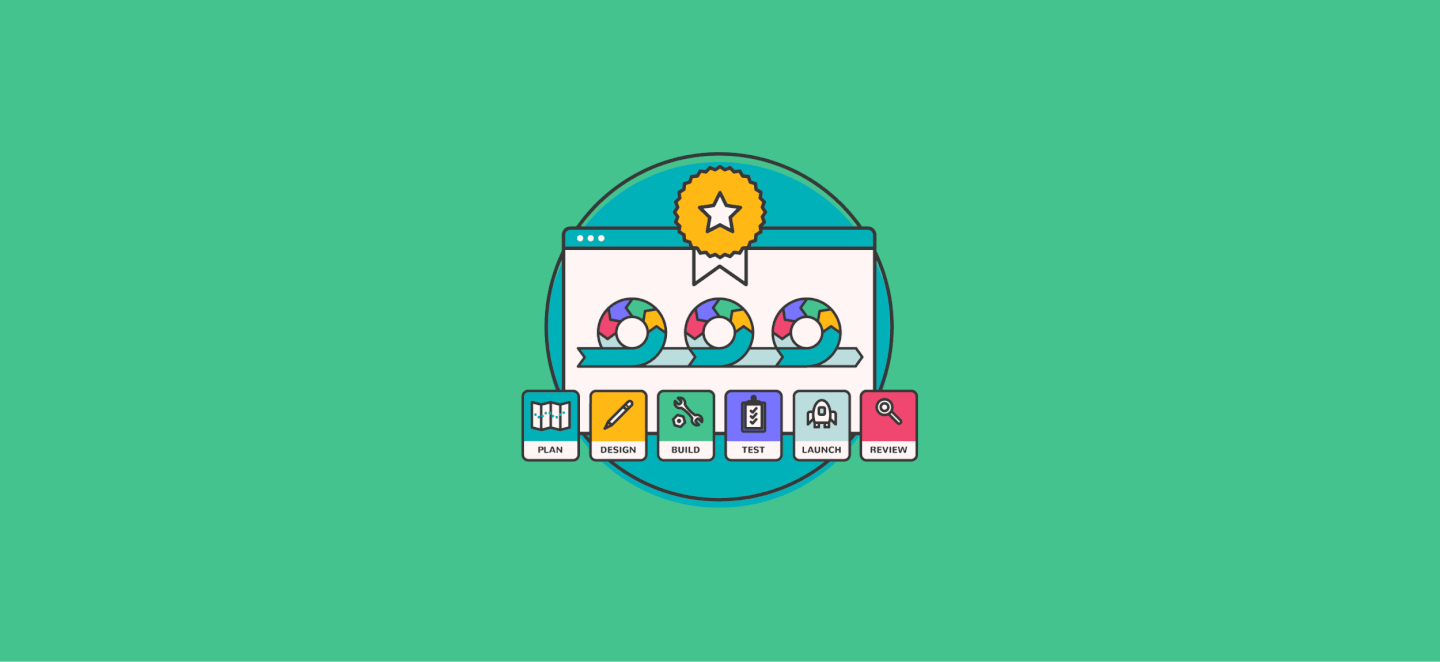
Tout le monde aime l’idée “d’être agile”, mais comment appliquer l’agilité dans votre agence? Et comment vous assurez-vous que votre ensemble d’outils prend réellement en charge les processus et les méthodes que vous envisagez?
Il existe un nombre incroyable d’options d’outils agile. Peut-être trop. Tout le monde aime gérer ses projets un peu différemment, il est donc important d’essayer quelques outils pour trouver ce qui fonctionne pour vous.
Aperçu des 10 meilleurs outils agile
Bien qu’il existe des douzaines d’outils de gestion de projet agile, voici une revue détaillée de la liste des outils de gestion de projet agile qui ont été sélectionnés par nous :
monday.com is a flexible tool that provides a structure that can easily be configured to suit teams working to agile and various hybrid methodologies. Because they’ve done away with some of the extra trimmings of typical PM tools, monday.com is a great choice for teams who want a simple, unobstructed focus on the work that needs to be done.
When using this tool, you put tasks on a board, and then you add in the steps you’ll need to take to get it done. It’s vaguely similar to a spreadsheet—but a much nicer-looking one that comes with multiple views (Kanban board, Gantt-style charts, list views) alerts, notifications, assignees, automated processes, and a lot more. Other features include a customizable task board for managing task status, assignee, due date, etc.
You can track your agile projects with monday.com’s project dashboards that collect data from multiple boards to easily see work in progress. You’ll also find easy file sharing and communication features such as mentions, comments, and hashtags.
Overall, this is an adaptable, easy-to-learn tool with a strong emphasis on customer service (the company’s customer support is available 24/7 by phone or email).
monday.com integrations include Slack, Google Drive, Gmail, Google Calendar, Jira, GitHub, Trello, Dropbox, Typeform, and many more that are accessible via Zapier.
monday.com costs from $6/user/month and comes with a free 14-day trial. They offer a free plan for up to 2 users.
Pros and cons
Pros:
- Huge focus on collaboration
- Long list of supported integrations
- Spreadsheet-style pulses for task progress
Cons:
- Complex pricing rubric
- Focus goes beyond Agile only
Uncertainty is one of the few certainties in business. Zoho recognized the need for a tool that helps teams embrace change. Zoho Sprints is a product management tool that empowers agile teams to plan, track, and ship the best products to their customers. Whether you are a seasoned agile practitioner or just starting out, Zoho Sprints can fit your needs.
Zoho Sprints helps product teams maintain an organized product backlog and simplifies sprint planning. The drag and drop planning interface allows scrum teams to move work items from the product backlog to the sprint backlog with ease. In keeping with the pioneering spirit of agile, their Scrum Board is highly customizable.
With Zoho Sprints, teams can stay release-ready at all times. From planning to deployment, the tool helps teams navigate the interdependencies of their release cycles. Product managers can track the progress of their epics, sprints, and releases through customizable reports and dashboards. Actionable insights from velocity charts, burnup and burndown reports, and cumulative flow diagrams help teams iterate sprint planning.
Communication and collaboration are crucial in every aspect of life, and they're especially critical when you're working with cross-functional teams. With Zoho Sprints, product teams can collaborate within the context of their work through features like built-in chat, virtual meetings, and an interactive project feed.
Zoho Sprints integrates well with popular code repository management tools like GitHub, GitLab, Bitbucket. DevOps teams can also automate their CI/CD pipelines by integrating with developer tools like Jenkins and Azure DevOps. Teams can leverage webhooks and APIs to build their integrations or browse through a growing library of apps listed on Zoho's marketplace.
The pricing for Zoho Sprints starts at $6 per user (billed monthly). They also offer a free trial and a free forever plan for up to 3 users.
Pros and cons
Pros:
- Robust customization options
- Easily schedule meetings for sprint reviews and daily stand-ups
- Easily turn feed messages into a work item
Cons:
- No cumulative by-project timesheets for a user
- Doesn’t integrate well with other Zoho apps
- WIP settings in Premier plan only
Miro offers a flexible visual collaboration environment, ideally suited for teams managing agile projects. This platform acts as a comprehensive online whiteboard for a range of activities including brainstorming, mind mapping, and documenting workflows, facilitating the clear depiction of projects, strategies, and roadmaps. Its versatility is especially evident in its support for Kanban and Scrum boards.
Whiteboards can be used to create Kanban and Scrum boards for tracking project process through to completion. A large bank of templates is available in the software, including many specifically designed for agile workflows. Unlike more traditional project management solutions, Miro is a flexible and highly customizable option because it essentially provides a blank canvas that can be used for all kinds of purposes.
What's particularly useful about Miro as an agile project management tool is that it can also be used for ideation purposes as well as strategizing and roadmapping. Teams can keep their overall strategy outlines in the same place as their project brainstorming documentation and their quarterly prioritization plans.
Miro's key functionalities also include task visualization by sprint, status, epic, and team, which enhance project organization. The tool's dependencies app enables teams to track inter-task dependencies across sprints, helping to prevent delays. Additionally, Miro's integration with Jira ensures task and priority alignment across platforms.
The software integrates with other workplace tools like Zoom, Microsoft Teams, Slack, Confluence, Google Workspace, Asana, monday.com, Jira, Dropbox, OneDrive, Notion, Airtable, ClickUp, and Unito, among others. A free plan is available and paid plans start from $10 per user per month.
Forecast is perfect for agile teams, as it ensures optimal project deliveries through an adaptive work process and workflow automation to save project managers time and maintain visibility on projects, tasks, and milestones.
The platform uses AI to help make estimates, so you can effectively plan for a more accurate view of your sprint capacity and monitor velocity. Everything is in one place so you can reduce the amount of rework and improve efficiency while grooming the backlog, planning the sprint, tracking progress and velocity, and discerning where processes can be improved.
Forecast also integrates with the tools your developers love, such as Azure DevOps, GitHub, GitLab, as well as two-way sync with Jira, so you can collaborate with ease and deliver value faster.
Forecast is currently used in 40+ countries worldwide, by agencies, consulting companies, and enterprises. Paid plans start at $29/user/month. Forecast has a 14-day free trial.
Pros and cons
Pros:
- Predictive tasks for spreadsheets
- Great UI
- Includes resource management
- Good for RFP processes
Cons:
- Additional fee for onboarding/training
- Higher learning curve than some other tools
- Caters more to agencies
Trello is a simple but powerful agile Kanban tool. If you’re looking for an easy entry into the world of agile tools, Trello is a great option as it’s one of the easiest agile tools to learn and it’s free (or at least it’s freemium!) and has to be considered one of the best free agile tools because it’s so intuitive and simple to use.
Being simple also means that it’s also limited in features and functionality. Out of the box, with the free version, Trello has task management and team collaboration, but it’s pretty limited.
For richer functionality you have to start paying for it – The Business class version gives you app integrations or “Power-Ups' which enable you to bolt on additional functionality such as Github integration, SalesForce, Slack, Gantt charts, timesheets, reporting, and analytics.
Trello is a free agile tool but paid versions cost $9.99/user/month.
Pros and cons
Pros:
- Excellent communication and collaboration tracking
- Vast capability to customize each card
- Color coding of cards according to priority
Cons:
- Board management customization could be improved
- Not well suited for large or overly complicated projects
- No native support for calendar integrations
Taiga has a rich and complete feature set with extensive customization options, at the same time it is very simple to start with through its intuitive user interface.
Whether your team uses Scrum, Kanban, Scrumban or just wants to track issues, Taiga is an ideal agile project management tool. Its features include an intuitive backlog and sprint planning, a sprint board with swim-lanes per user story and a sprint dashboard with a burndown chart, fully customizable Kanban boards with WIP limits, Epics, subtasks, issue tracking, and a Wiki function.
Furthermore, you can specify different team roles, estimate story points per role and move unfinished user stories to other sprints.
The project timeline and projects dashboard provide an easy overview of activities while the sprint and team performance dashboards are focused on closed tasks, points from completed user stories and specific elements like issues reported and Wiki pages edited. There is also a unique estimation game to determine the (relative) size of different user stories.
What makes it stand out is the intuitive user interface. This makes Taiga particularly useful for multi-functional teams and/or client teams. The zoom function for the Kanban and Sprint boards allows you to easily move from overview to detail view and back and the tool is available in over 30 languages.
Integrations with Slack, Hipchat, GitHub, Gitlab, Mattermost are pre-configured. A lot more integrations are possible through easy to configure webhooks and an extensive API set. If you are currently working with Trello, Asana, Jira 7 or Github, you can seamlessly import your project data.
Taiga costs from $7/user/month for unlimited private projects. They offer a 30-day free trial (no credit card required).
Pros and cons
Pros:
- Easily create cards and track progress
- Options for adding custom user inputs
- Saves time by easily replicating past workflows
Cons:
- Can be challenging to categorize and link items
- Can’t see history of item with documented changes
- Strongly oriented towards ticket processing
The award-winning software ProjectManager.com is a well-rounded PM tool used by some big-name brands, including NASA and Ralph Lauren.
It’s not a pure-bred agile tool, but it offers a couple of flexible features that agile teams in various settings can take advantage of. For example, Kanban boards with real-time reports and collaboration features. You can attach files to cards, make comments, assign tasks, and check your real-time project stats in the dashboard view. For reporting, it doesn’t specifically have agile reports (for instance, a burndown chart). However, the real-time dashboard serves the same purpose—and you can set up your own custom reports in addition to pre-set reports on expenses, timesheets, team availability, workloads, tasks, and more.
One of the coolest things about this tool is that it lets you seamlessly switch between views. It’s a great tool for teams who have adopted some agile principles into a hybrid methodology because you can easily toggle between Gantt chart, task list, and Kanban board views, adapting the tool to what makes the most sense for the task at hand.
ProjectManager.com integrations include native integrations with Google Apps like Drive, Gmail, Calendar, etc. as well as Microsoft Office and Microsoft Project. For all other integrations, you can use Zapier to sync ProjectManager.com with other tools.
Pricing for ProjectManager.com starts at $15/user/month, with their basic “Personal” plan requiring a minimum of 5 users. They offer a 30-day free trial (a credit card is required to sign up for a free trial).
Pros and cons
Pros:
- Excellent high level view of project
- Customizable schedule templates
- Time and expense tracking
- Multilingual and very flexible
Cons:
- No mobile app
- No way to update partially complete tasks
- Doesn’t output schedule files to .mpp
Hubstaff Tasks is a visual project management tool designed to help agile teams finish projects efficiently. It offers multiple project views that allow greater planning flexibility and smoother collaboration between teams.
The tool's Sprints view lets users see all the tasks assigned to them in one location, organized by sprint — current, future, or backlog. This feature helps in prioritizing the right tasks and avoiding missed deadlines. If you’re a fan of Gantt charts, Hubstaff Tasks also has a Roadmaps feature that serves this purpose.
The app has a Kanban interface that allows you to organize your tasks in different columns. Users can create a card for each task and move them to different project stages with a drag-and-drop mechanism. Team members who are assigned to or are following the task will receive notifications, allowing them to stay up to date.
It also offers several task management elements such as checklists, labels, estimates, deadlines, and file attachments.
Hubstaff Tasks has a custom workflows feature that lets you automatically move tasks to various project stages while assigning them to different team members with one click. You can create different workflows on different project boards.
The tool's main disadvantage is its integrations — it only integrates with Hubstaff, which tracks time to tasks and projects.
Pricing for Hubstaff Tasks starts at $7 per user per month. There is also a freemium version available.
Pros and cons
Pros:
- Easy prioritizing with the Sprints feature
- Users can communicate with notifications and comments
- Customizable workflows and multiple project views
Cons:
- Only one integration
- The free plan only allows up to 5 users
- Web app only
Clarizen is an enterprise-grade professional service automation software solution, designed to speed up the way you do business – integrating work, content, and process tightly together to enable more efficient working. Clarizen’s real focus is making projects happen faster with timesaving workflows. Clarizen is a great project management tool if you have lots of repeatable projects that require repeatable processes as workflow automation is pretty flexible and powerful.
It covers off the PPM basics of task lists, schedules, docs and files, communications and reporting without breaking a sweat. Clarizen’s project planning tools are a powerful mix of functionality across the planning, executing and controlling of a project. Within planning are project workflows, a full-featured resource, schedule, and task planning tools, with project and portfolio optimization so that you can easily and quickly align projects to business objectives.
For project execution, Clarizen enables everyone on the team to be aligned with a dashboard that enables teams to work better together and see how their contribution fits into the bigger picture – from the project timeline and milestones to budget, project discussions, and sharing documents.
Instead of being obligated to make educated guesses, project managers can make accurate data-based decisions that align project selection and investment with big picture priorities. Changing tasks and schedules takes a few clicks, and project managers can run hypothetical scenarios to proactively see the impact of resource changes before they go live, and alert end users via their personal dashboard of any changes to their workload. Because resource scheduling is built-in, Clarizen delivers real-time insights into all available resources, schedules, and tasks.
Clarizen has some really powerful integration options out the box that is worth considering if you have other business-critical systems already in place. You can combine the power of Clarizen with other enterprise tools including Jira, SharePoint, Tableau, Salesforce, and Intaact, among others with a subscription to an App integration so you don’t have to play around with the API’s yourself. As well as the enterprise tool integrations possible, Clarizen has an App marketplace to add additional functionality into the system including helpful add-ons like active directory sync, Excel reporting integration, and priority automation – many of which are free.
Clarizen offers a free trial and costs from $60/user/month.
Pros and cons
Pros:
- Great graphical workflow editor
- Completely customizable fields and panels
- Strong focus on collaboration
- Variety of ways to customise PM workflows
Cons:
- Higher learning curve
- Could use better issue tracking
- Only has 3 support mailboxes
Nutcache is a project management tool designed to plan, track, and manage all aspects of your project using a sophisticated toolbox of color-coded schedules, task organization queues, and data reporting. Users can organize with Agile or Scrum project management, depending on your preferences.
Use the Gantt chart to plan, track, and visually organize your tasks with easy drag-drop-and-click editing techniques. Nutcache offers tools to prioritize and focus on critical tasks: build custom workflows and attach multiple assignees to a task, break down each phase of your project, make adjustments to reschedule your tasks, and visualize project deadlines.
Integrations include Dynacom Accounting, PayPal, 2Checkout, Stripe, Authorized.Net, QuickBooks Online, Google Sign In, Google Drive, GitHub, Slack, and hundreds of other apps through Zapier.
Nutcache costs from $6/user/month with a “Pro” plan that requires 5 users.
Pros and cons
Pros:
- Easy to use
- Great time tracking functionality
- Easy to integrate new employees
Cons:
- Complicated security levels for employees
- Need more third party integrations
Synthèse des meilleurs outils Agile
| Tools | Price | |
|---|---|---|
| monday.com | From $8/user/month (billed annually, min 3 seats) | Website |
| Zoho Sprints | From $3 /user/month for up to 100 users | Website |
| Miro | From $10/user/month | Website |
| Forecast | Pricing upon request | Website |
| Trello | From $6/user/month | Website |
| Taiga.io | From $7/user/month | Website |
| ProjectManager.com | From $13/user/month (min 5 seats) (billed annually) | Website |
| Hubstaff | From $7/user/month | Website |
| Planview Clarizen | Pricing upon request | Website |
| nutcache | From $12.49 project-planning/user/month (billed annually) | Website |
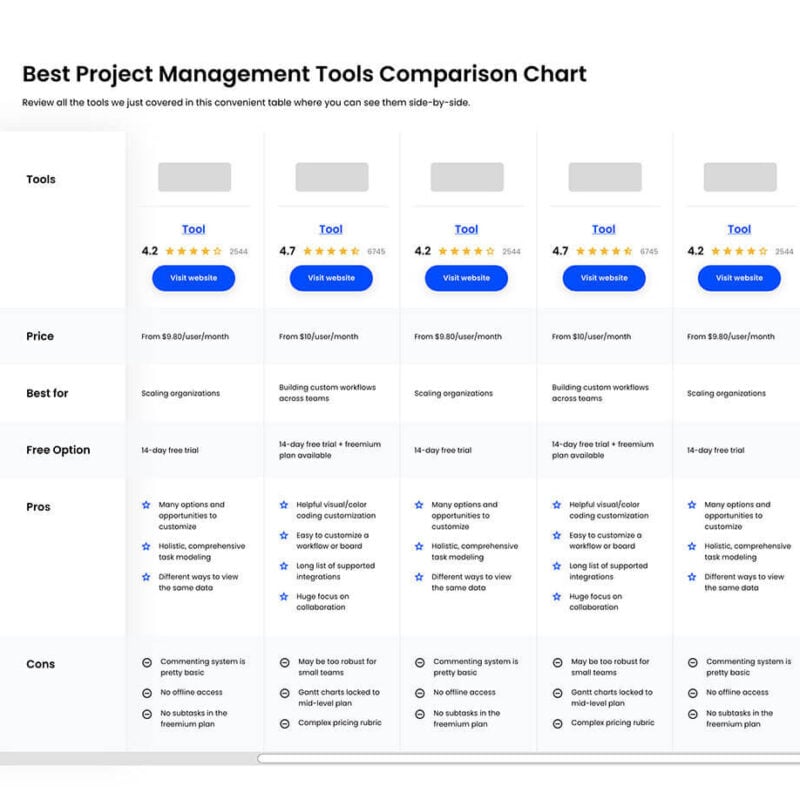
Compare Software Specs Side by Side
Use our comparison chart to review and evaluate software specs side-by-side.
Compare SoftwareAutres outils agile à considérer
Rien de ce qui précède ne fonctionne pour vous? Consultez notre liste d’autres outils agile qui valent le coup d’œil:
- Businessmap
Best project portfolio software
- PivotalTracker
Best agile tool for software development projects
- Nostromo
Best agile tool for user experience and usability
- Easy Redmine
Best agile tool with built-in financial management features
- Favro
Best agile tool for team collaboration
- Height
Best agile pm software with cross-functional collaboration features
- SAM9000
Easier Project Management powered by AI. Tasks, Kanban, Emails, File sharing and Guest uploads, in one cross-platform app
- ClickUp
Best visual aids to support your sprints and make important items easy to distinguish
- Kintone
Best for building custom agile workflows
Vous voulez de l’aide pour réduire les options?
Cet outil est très utile. Nous nous sommes associés à Crozdesk pour vous donner accès à leur “Software Finder”.
Si vous saisissez certains détails sur votre projet et les fonctionnalités que vous recherchez dans un outil de gestion de projet, une liste d’outils correspondant à vos préférences sera générée. Vous fournissez votre email, et ils vous envoient un beau guide PDF avec un résumé de vos meilleures options.
